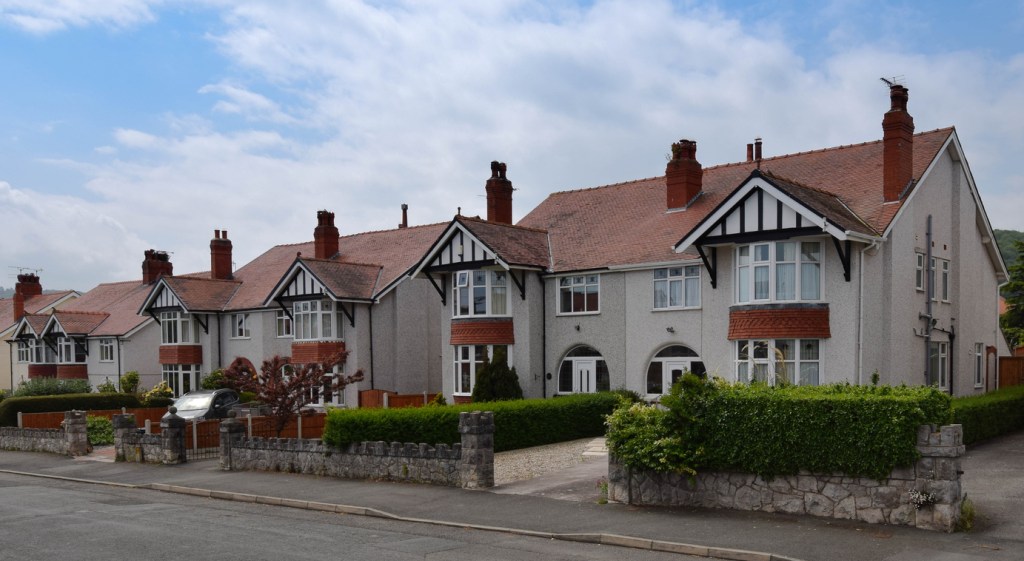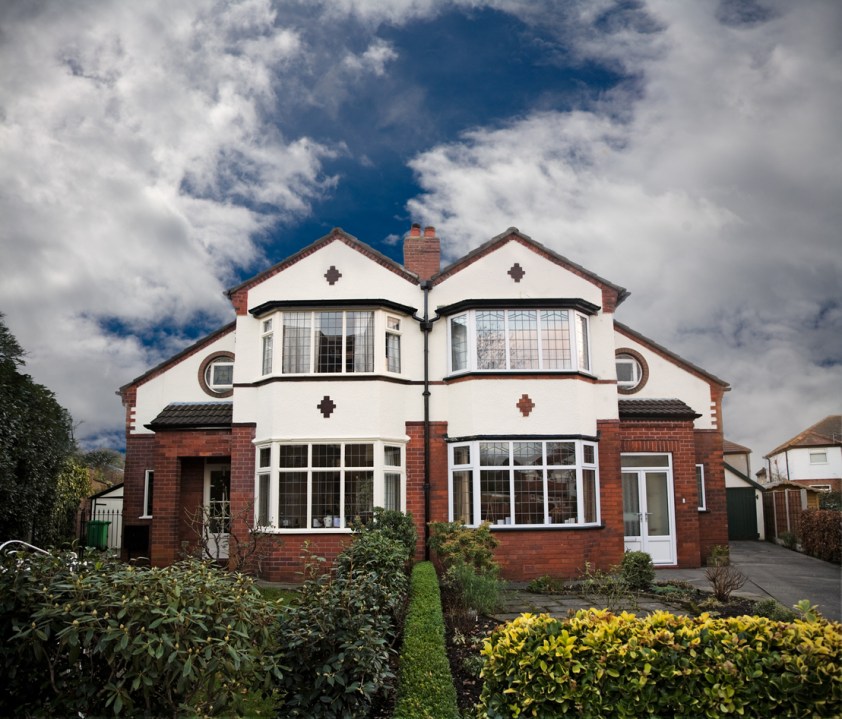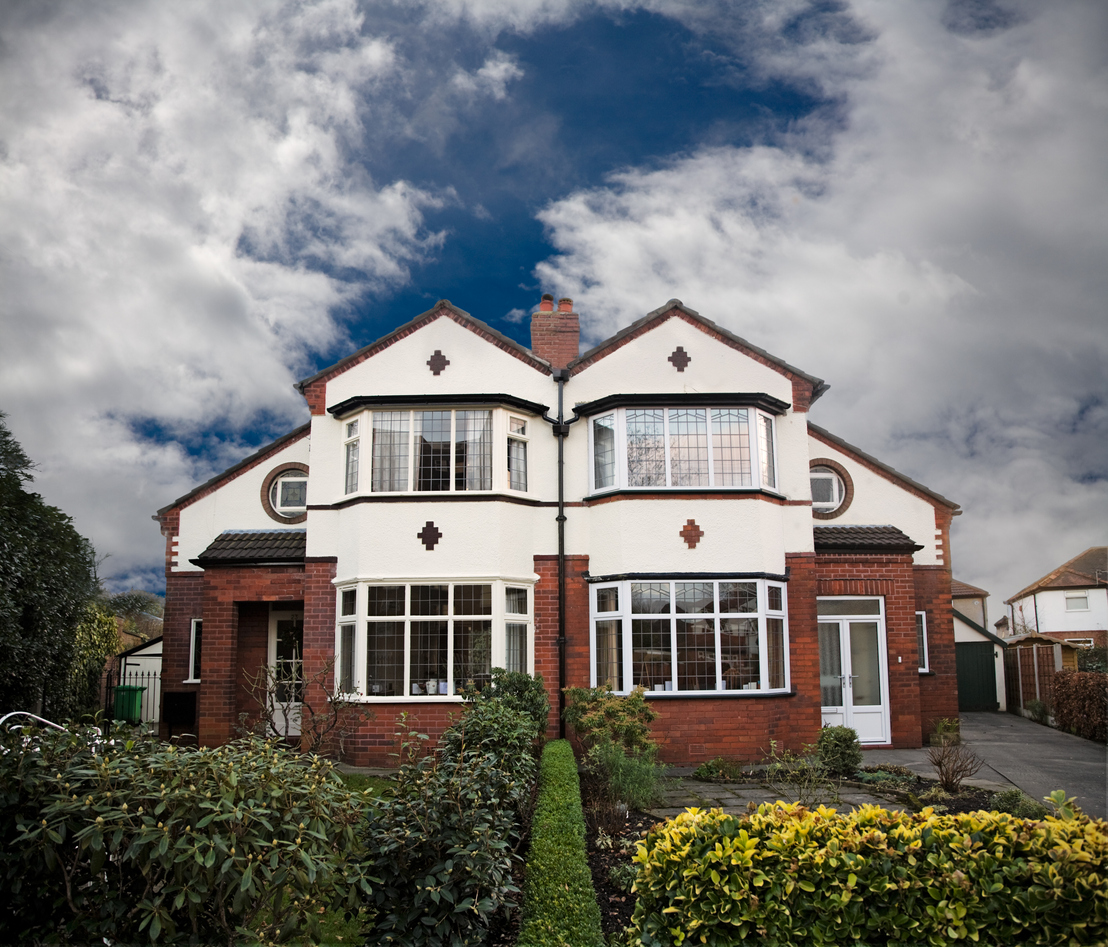In 1939 George Orwell took aim at burgeoning British suburbia and its population of lower middle class lackeys in his novel Coming Up for Air, memorably describing the new homes being built on the fringes of cities as ‘semi-detached torture chambers where the poor little five-to-ten pound a-weekers quake and shiver’.
More than eight decades on and the Office for National Statistics reports that one in three of us lives in a semi-detached home, an architectural style with a far longer and more interesting history than Orwell may have been aware of. They are also – officially – the hottest property type on the market.
Analysis of more than 100,000 house sales over the past year by sales firm Property Solvers found that semis took an average of 150 days to sell. Terraces took 152 days to go through the same process, and detached houses averaged 155 days. Flats trailed the pack, taking 176 days to shift.
Experts believe that a large part of the appeal of the semi is its in-between status – cheaper than a detached home in these straitened times, but less doll’s-house in scale than traditional terraces
Experts believe that a large part of the appeal of the semi is its in-between status – cheaper than a detached home in these straitened times, but less doll’s-house in scale than traditional terraces. ‘Semi-detached properties offer a lot more value for money than detached properties and more privacy and space than terraced houses,’ says buying agent Carol Peett, managing director of West Wales Property Finders. ‘Rooms in a semi tend to be larger than in a terraced property and equal to those in a detached house, and in west Wales they are often more than £100,000 cheaper than a detached property of a similar size.’
Catherine Merrett, sales manager at Anthony Roberts estate agents in Richmond, south-west London, explains that as well as being £100 to £200 less expensive per sq ft than detached homes, semis have many of the same practical benefits. ‘Side access is great for doing gardening work and not having to bring bikes, muddy boots and bins through the house,’ she says. ‘There will only be one set of adjoining neighbours, so potentially less noise to worry about. Semi-detached homes are also more likely to have off-street parking.’
It’s easy to imagine that the semi – the staple backdrop of sitcoms set in the suburbs, from Mum, starring Lesley Glanville, to Ricky Gervais’s After Life – was born in the inter-war years. But in fact cojoined houses were a medieval invention. Early examples of timber framed semis from the 14th and 15th centuries have been found everywhere from Suffolk to Staffordshire.
The idea of twin houses was later adopted by 17th century landowners who wanted to dot their estate with grand-looking workers’ cottages without having to build anything too expensive for their labourers to live in. They got the look by wedging two modest cottages together, creating the optical illusion of something much more deluxe.
In town, Georgian era developers were thinking along the same lines. Two townhouses stuck together could be made to appear like a single large house from the street, particularly if their separate front doors were hidden at the side of each house. And as well as looking the part, these speculators liked the cost-effectiveness of being able to build two houses on one plot, with a shared party wall.

Despite these efforts to dress up the semi, society wasn’t easily convinced. Snobbery against the idea of living under the same roof as another family was alive and kicking well before Orwell put the boot in. In Vixen, the 1879 novel by the popular Victorian novelist Mary Elizabeth Braddon, the heroine Pamela Winstanley is mortified when her husband suggests saving money by moving to a semi-detached villa. ‘I might die in a semi-detached house, Conrad. I’m sure I could not live in one,’ she exclaims piteously.
Semis as we know them today proliferated between the wars, and were cleverly rebranded as aspirational homes for families escaping crowded and grubby city centres. Compared with tightly packed urban terraces, the semi seemed not only modern, but extravagantly spacious and luxuriously private.
Builders tapped into their delusions of grandeur, heralding the era of the mock Tudor semi which, in turn, turned both semis, and the suburbs in which they stood, back into a sly metropolitan gag.
But after the pandemic the idea of living in a spacious home, on a leafy street, with plenty of open space, clean(ish) air and a home office doesn’t sound quite so hilariously unhip. And its current performance in the sales market suggests that after so many years as the butt of the joke, it is the semi that is having the last laugh.







Comments